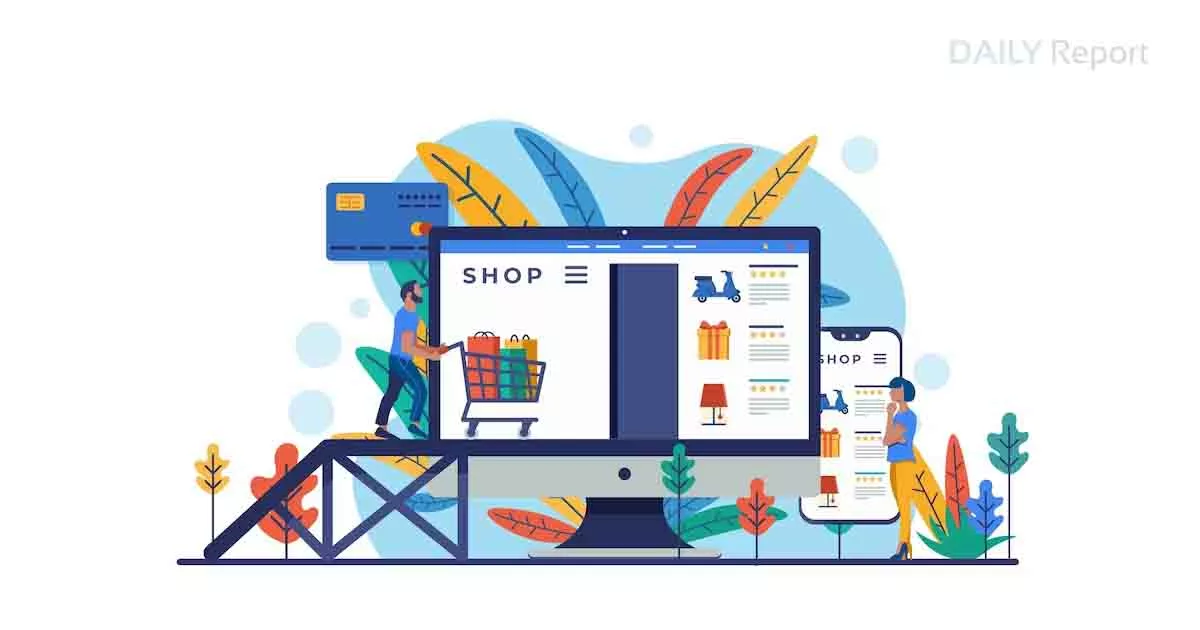The Rise of E-commerce: Changing the Way We Shop 2023
The world of retail has undergone a radical transformation in recent years with the advent of e-commerce. Online shopping has gained tremendous momentum, and its impact can be felt across industries and geographies. The convenience, variety, and competitive pricing offered by e-commerce platforms have reshaped consumer behavior and disrupted traditional brick-and-mortar retail. In this blog post, we will explore the rise of e-commerce and how it has fundamentally changed the way we shop.
1. The Emergence of E-commerce
The roots of e-commerce can be traced back to the 1990s when the internet started gaining widespread popularity. Companies like Amazon and eBay pioneered online retail by providing a platform for buyers and sellers to connect virtually. Initially, there were doubts about the viability and security of online transactions, but as technology advanced, so did consumer confidence.
The widespread availability of affordable internet access, advancements in mobile technology, and the growth of social media have contributed to the exponential growth of e-commerce. Today, e-commerce platforms offer a wide range of products, from electronics and apparel to groceries and furniture. The convenience of browsing and purchasing products from the comfort of our homes has revolutionized the shopping experience.
2. Convenience and Accessibility
One of the primary drivers of e-commerce’s popularity is convenience. Traditional retail stores have limited operating hours, and shoppers often have to travel long distances to find specific products. E-commerce has eliminated these barriers by enabling 24/7 access to a vast array of products. Whether it’s late at night or during a holiday, consumers can shop at their convenience.
Moreover, e-commerce has made shopping accessible to people with physical limitations or those living in remote areas. Online shopping eliminates the need to navigate crowded malls, making it particularly appealing to individuals with mobility issues. Additionally, consumers in rural or underserved areas can now access a wider range of products without the need to travel long distances.
3. Expanded Product Range and Customization
E-commerce platforms have significantly expanded the product range available to consumers. Traditional retail stores have limited physical space, which constrains the number of products they can offer. In contrast, e-commerce platforms can showcase an unlimited number of products, providing shoppers with an extensive selection to choose from.
Furthermore, e-commerce has opened up opportunities for customization. Consumers can personalize products, such as clothing and accessories, by selecting colors, sizes, and designs according to their preferences. This level of customization was rarely possible in traditional retail, offering a more personalized shopping experience for consumers.
4. Competitive Pricing and Discounts
E-commerce has also intensified competition among retailers, resulting in competitive pricing and frequent discounts. Online retailers often have lower operating costs compared to brick-and-mortar stores, allowing them to offer products at lower prices. The ability to compare prices across different platforms empowers consumers to find the best deals and make informed purchasing decisions.
Moreover, e-commerce platforms frequently run promotional campaigns, offer discount codes, and provide loyalty programs to attract and retain customers. This has not only made shopping more affordable for consumers but has also influenced their purchasing behavior. Consumers have become more price-conscious and tend to hunt for the best deals before making a purchase.
5. The Impact on Traditional Retail
The rise of e-commerce has had a profound impact on traditional retail. Many established retailers have struggled to adapt to the changing landscape, leading to the closure of numerous stores. The convenience and competitive pricing offered by e-commerce platforms have lured customers away from physical stores, causing a decline in foot traffic and sales.
To stay relevant, traditional retailers have had to invest in their online presence and adopt an omnichannel approach, combining physical stores with e-commerce platforms. Some retailers have successfully
implemented strategies such as offering click-and-collect services, where customers can order online and pick up their purchases from a nearby store. Others have focused on enhancing the in-store experience by providing unique offerings and personalized customer service that cannot be replicated online.
Despite these efforts, the rise of e-commerce has undoubtedly disrupted the retail landscape. The closure of physical stores has resulted in job losses and changes in the job market, with an increased demand for e-commerce-related roles such as logistics and digital marketing. The transformation of retail has also impacted shopping malls, which have had to evolve to offer experiences beyond traditional shopping, such as entertainment, dining, and interactive displays.
6. The Evolution of Customer Experience
E-commerce has not only changed the way we shop but has also transformed the overall customer experience. Online retailers leverage data analytics and artificial intelligence to understand customer preferences and provide personalized recommendations. This level of personalization creates a tailored shopping experience, enhancing customer satisfaction and loyalty.
Additionally, e-commerce platforms have implemented user-friendly interfaces, simplified checkout processes, and secure payment options, making the purchasing journey seamless and efficient. The ability to track orders and receive real-time updates on delivery status has further improved transparency and customer satisfaction.
Moreover, social media and user-generated content have played a significant role in shaping the customer experience in e-commerce. Consumers can read reviews, watch product demonstrations, and seek recommendations from peers before making a purchase decision. The power of social media influencers and their ability to showcase products to a vast audience has transformed the way brands market their products and engage with customers.
7. The Future of E-commerce
As technology continues to advance, e-commerce is poised for further growth and innovation. Here are some key trends and developments that will shape the future of e-commerce:
a. Mobile Commerce: With the increasing penetration of smartphones and improved mobile connectivity, mobile commerce, or m-commerce, is expected to thrive. Consumers can now shop on the go, making purchases directly from their smartphones or tablets.
b. Augmented Reality (AR) and Virtual Reality (VR): AR and VR technologies are revolutionizing the online shopping experience. Consumers can virtually try on clothes, visualize furniture in their homes, or experience immersive product demonstrations, bridging the gap between physical and virtual shopping.
c. Voice Commerce: Voice-activated virtual assistants like Amazon’s Alexa and Apple’s Siri are gaining popularity, enabling consumers to make purchases using voice commands. Voice commerce is expected to become more prevalent as voice recognition technology improves.
d. Sustainability and Ethical Shopping: Consumers are increasingly conscious of the environmental and social impact of their purchasing decisions. E-commerce platforms are responding by offering sustainable and ethically sourced products, providing consumers with more choices aligned with their values.
e. Same-Day Delivery and Drone Delivery: Speedy delivery options are becoming the norm, with e-commerce giants investing in logistics infrastructure to offer same-day or even same-hour delivery. Drone delivery is also being explored as a potential solution for last-mile delivery.
Conclusion
The rise of e-commerce has undoubtedly changed the way we shop. The convenience, accessibility, expanded product range, and competitive pricing offered by e-commerce platforms have revolutionized the retail industry. Traditional retailers have had to adapt to the changing landscape, embracing technology and adopting omnichannel strategies to remain competitive.
The customer experience has also evolved, with personalized recommendations, seamless checkout processes, and transparent tracking systems enhancing satisfaction. The future of e-commerce holds exciting possibilities, including mobile commerce, augmented reality, voice commerce, and sustainable shopping.
As consumers, we are living in an era of unprecedented choice and convenience, where the world’s products are just a few clicks away. While traditional retail will always have its place, the rise of e-commerce has reshaped the retail landscape, empowering consumers and redefining the shopping experience






